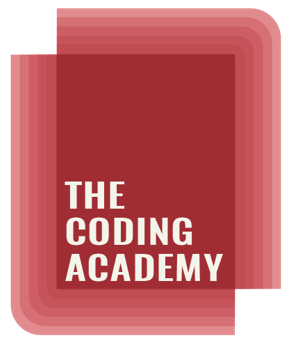
|

|

|
|
autonomic nervous system
|
(or-toh-nom'ik)
involuntary nervous system not subject to control by
human will; made up of the
parasympathetic and
sympathetic systems.
|

|

|

|
|
axon
|
(aks'on)
extension of a
nerve cell that carries
electrical impulses away from the cell body; also
known as nerve fibres.
|

|

|

|
|
brain
|
extremely complex mass of
nervous tissue organised in five distinct sections:
1) cerebrum, 2) midbrain, 3) pons, 4) medulla oblongata and 5)
cerebellum.
|

|

|

|
|
brainstem
|
extension into the skull of
the spinal cord; consists
of the medulla oblongata,
the pons and the midbrain.
|

|

|

|
|
central nervous system
|
the brain
and spinal cord;
often abbreviated to CNS.
|

|

|

|
|
cerebellum
|
(ser-ee-bel'um)
part of the
hindbrain, consisting of a median lobe and two
lateral lobes.
|

|

|

|
|
cerebrospinal fluid
|
(ser-ib-ro-spy�nal)
watery
fluid which surrounds the brain
and spinal cord
to cushion and protect these vital organs; often
abbreviated to CSF.
|

|

|

|
|
cerebrum
|
(se'ri-brum)
the main
portion of the brain,
comprised of two hemispheres, consisting mainly of
nerve cell bodies.
|

|

|

|
|
cervical nerves
|
(sur'vik-ul)
eight pairs of
spinal nerves leaving the
vertebral column at the
associated cervical vertebrae
.
|

|

|

|
|
cranial nerves
|
(kray�nee-ul)
the 12 pairs
of nerves originating
from the brain.
|

|

|

|
|
dendrite
|
(den'drite)
extension of a
nerve cell carrying
electrical impulses to the cell body.
|

|

|

|
|
ganglion
|
(gang'lee-on)
a group of
nerve cells located
outside the central nervous
system; plural: ganglia.
|

|

|

|
|
hypothalamus
|
(hy-poh-thal'a-mus)
part of
the forebrain, immediately above and linked to the
pituitary gland, which
controls the release of pituitary hormones.
|

|

|

|
|
lobes
|
divisions of the cerebrum, called frontal,
occipital, parietal and temporal lobes.
|

|

|

|
|
lumbar nerves
|
(lum'bur)
five pairs of
nerves leaving the vertebral column at the
associated lumbar vertebrae
.
|

|

|

|
|
meninges
|
(min-in�jeez)
three
membranes which cover and protect the brain and spinal cord: the innermost
membrane is the pia mater (pee'ar mar�ter); the
middle membrane is the arachnoid mater (a-rak�noid
mar�ter); the outermost membrane is the dura mater
(dyoo�rah mar�ter).
|

|

|

|
|
midbrain
|
the small portion of the brainstem, excluding the
pons and the medulla, that joins the
forebrain to the hindbrain.
|

|

|

|
|
motor nerve
|
a nerve
which conducts away from a centre (an
efferent nerve) and causes contraction of a muscle
or secretion.
|

|

|

|
|
nerve
|
bundle of nerve fibres which
convey impulses to and from a part of the central nervous system and
another part of the body.
|

|

|

|
|
nerve cells
|
found in the grey matter of
the brain and spinal cord, in ganglia,
and as single cells in organ walls; vary in size and
shape.
|

|

|

|
|
nerve impulse
|
the electrochemical force
conveyed along nerve fibres.
|

|

|

|
|
nerve plexus
|
(plek�sus)
network of
nerves.
|

|

|

|
|
neurons
|
(new'rons)
commonly
referred to as nerves,
they consist of a nerve cell
and its processes, axons
and dendrites;
also spelled neurone (new'rown).
|

|

|

|
|
occipital lobe
|
(ok-sip�i-tul)
posterior
lobe of the brain.
|

|

|

|
|
parasympathetic nervous system
|
portion of the autonomic nervous system
that leaves the central nervous
system in the cranial and sacral regions
of the spine and has a general calming effect on the
body; see also sympathetic
nervous system.
|

|

|

|
|
peripheral nerve
|
(per-if�er-ul)
an
outlying nerve, distal from its origin at
the spinal cord; see
motor nerve and sensory nerve.
|

|

|

|
|
sacral nerves
|
(say'kral)
five pairs of
nerves leaving the spinal
column in the sacral area.
|

|

|

|
|
sensory nerve
|
a nerve
which perceives sensations such as pain,
touch, and pressure, and conducts them towards a
centre (an afferent
nerve).
|

|

|

|
|
spinal cord
|
(spy'nul)
the major pathway
for transmission of nerve impulses between the brain and parts of the
body; the spinal cord extends about 45 cm from the
base of the brain down
the spinal canal.
|

|

|

|
|
spinal nerves
|
(spy'nul)
the 31 pairs of
nerves that arise from
the spinal cord and
emerge between the vertebrae
.
|

|

|

|
|
sympathetic nervous system
|
portion of the autonomic nervous system
that leaves the central nervous
system at the thoracolumbar region and
prepares the body for "fight and flight" in exciting
or stressful situations, increasing adrenaline and
norandrenaline secretion; see also parasympathetic nervous
system.
|

|

|

|
|
thoracic nerves
|
(thor-ass'ik)
twelve pairs
of nerves leaving the
vertebral column at the
associated thoracic vertebrae
.
|

|

|

|
|
thoracolumbar region
|
(thor�ah-koh-lum�bar)
thoracic and lumbar regions of the spine.
|

|

|

|
|
ventricles
|
(ven'tri-kuls)
cerebral
ventricles are four irregular shaped cavities within
the brain containing
cerebrospinal fluid.
|






